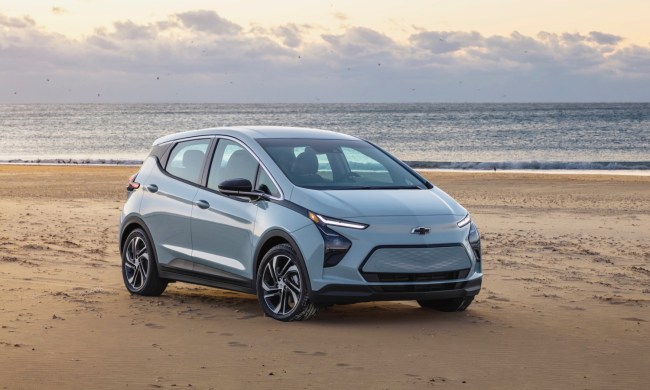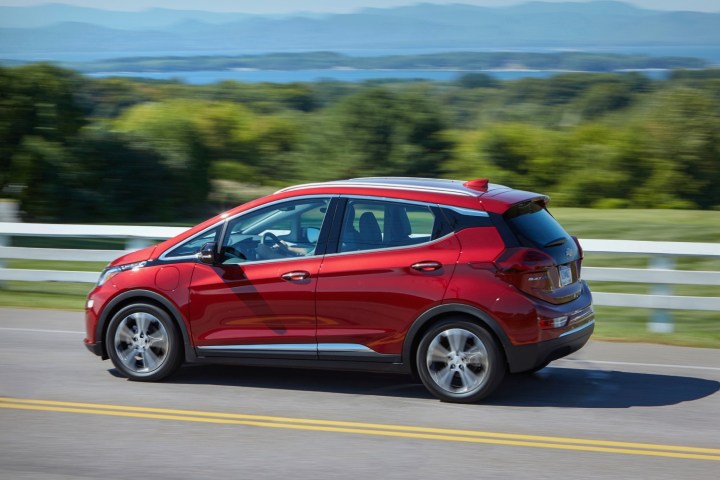
It looks like the Bolt isn’t dead after all. Only a few months after Chevrolet announced that it would be killing the Bolt EV, the company reversed course and said that the Bolt will live on. And, finally, we have a few more details about what will likely remain one of the cheapest EVs in its next iteration.
That’s not to say it’ll ever be the same again, though. On the contrary, Chevrolet says that it’ll be releasing a new-and-improved second generation of the Bolt that’ll be built on General Motors’ Ultium platform. In other words, it might end up being a whole lot better than the already great-value current-generation Bolt — which will be super helpful in helping make for higher-quality cheap EVs.
It’s currently unclear if Chevrolet will be keeping the Bolt EUV too, though given the popularity of large cars these days, we’d be surprised if it didn’t keep the larger Bolt.
Curious to learn more about the next-generation Chevrolet Bolt? Here’s everything we know so far.
2025 Chevrolet Bolt design
There’s almost nothing that we know about the design of the next-generation Bolt — though it’s likely it’ll keep some design cues from the current-generation model.
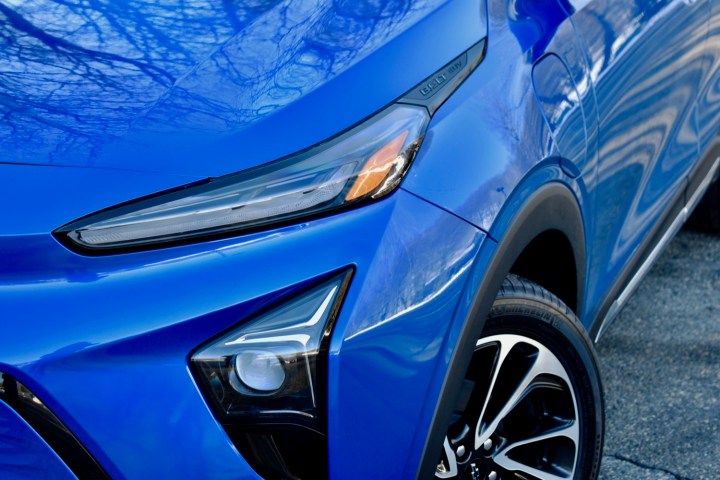
The current Bolt is known for its somewhat bulbous front and slanted headlights, along with the hatchback rear. We’re expecting that at the very least, the next Bolt will be a hatchback.
If Chevrolet keeps the Bolt EUV, like the current generation, it’ll likely be more or less a larger version of the standard Bolt EV.
Hopefully, both the Bolt EV and Bolt EUV (if released) will offer a slightly sleeker, more interesting design. The Bolt EV isn’t completely hideous, but it’s far from being stylish. Most of the best electric cars these days at least have a sense of style, even if they don’t all look that great. If the wildly revamped 2023 Toyota Prius taught us anything, budget cars don’t need to be bland.
2025 Chevrolet Bolt price
The price is perhaps the best thing about the current Chevrolet Bolt. In fact, the car is one of the cheapest electric cars out there right now, making it a go-to for those who want the advantages of an electric car without having to pay an arm and a leg.
Unfortunately, we don’t yet know how much the 2025 Bolt will cost. Hopefully, it’ll come at a similar price to the-generation model or lower. Currently, the Bolt starts at $26,500, with the Bolt EUV starting at $27,800.
2025 Chevrolet Bolt release date
We finally have some information about the release date of the next-gen Bolt, however, when we’ll see it is still a little up in the air. General Motors CEO Mary Barra announced at an Automotive Press Association event that the car would be coming in 2025.
Unfortunately, we don’t know exactly what that means. It likely means that it will be relaunched as a 2025 model year vehicle, and that we’ll see it in late 2024. Alternatively, it could mean that General Motors will show off the car in 2025 and launch it as a 2026 model. We’re betting on the former, which would allow us to see the car sooner rather than later.
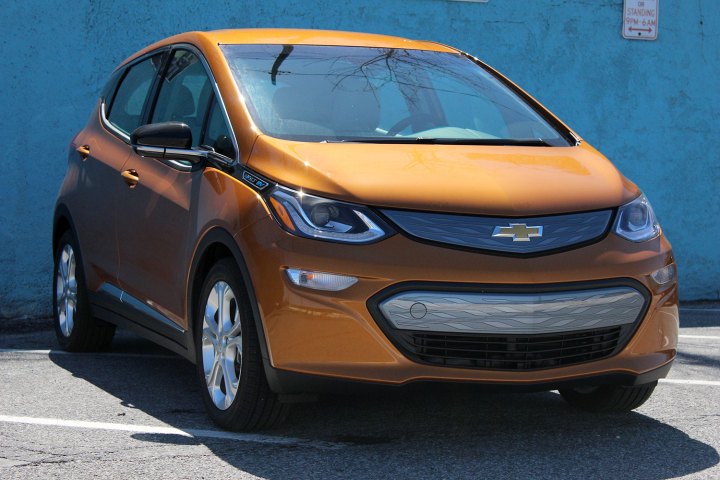
2025 Chevrolet Bolt colors and models
Chevrolet has yet to announce the Bolt, and as such we have no idea what kinds of colors and models to expect from the car.
That said, we can absolutely expect to see multiple models of the car. Currently, Chevrolet offers the 1LT and 2LT models, with the more expensive 2LT largely just getting nicer seats and some better tech features.
2025 Chevrolet Bolt charging speed and range
We also don’t yet know the specifics of the 2025 Chevrolet Bolt’s charging speed and range — though we do have some clues as to what to expect. That’s because we know that the 2025 Bolt will be built on the General Motors Ultium platform.

That basically means that the new Bolt should be lighter, and thus offer a better range, while remaining cost-efficient — as the battery reduces cobalt use by 70%. We’re also expecting the car to utilize the Tesla NACS charging connector, which GM has announced it will adopt by 2025.
We’ll still have to wait and see what kind of range and charging speed we got from the new Bolt though. We’re hoping it’ll reach at least 300 miles.
2025 Chevrolet Bolt performance
The Bolt is built to be cost-efficient, and as such, it likely won’t be the fastest car out there — but as a modern electric car, it should still offer some decent acceleration. The current-generation model can get from 0 to 60 miles per hour in 6.5 seconds, which isn’t bad — and allows drivers to zip around town relatively easily.
Hopefully, the next Bolt will build on that with slightly faster acceleration. GM’s prior announcements about its Ultium platform offer some clues. The lowest-spec Ultium motor GM has announced still offers 241 hp, up substantially from the 200 hp the current-gen Bolt offered.
2025 Chevrolet Bolt tech features
The 2025 Bolt EV will likely offer some great tech features too. While we don’t know the exact features to expect just yet, it’s unlikely that the features will be radically different than what’s currently offered on the car. That means that you’ll get features like adaptive cruise control, a range of parking sensors, and more.
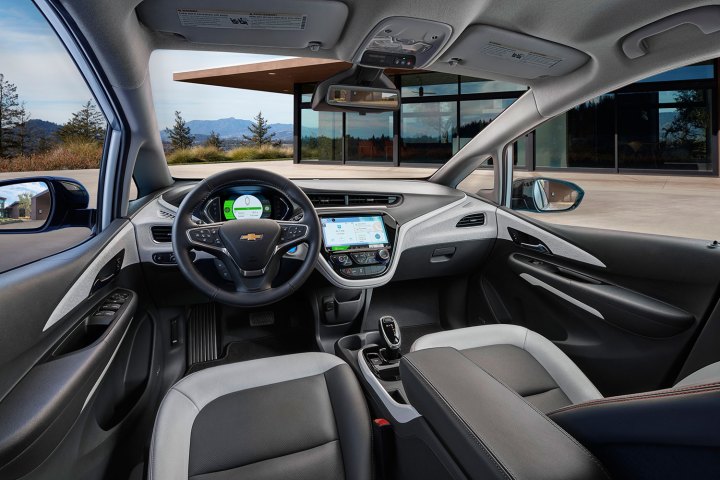
General Motors has said that it will no longer use CarPlay or Android Auto, so we’re not expecting to see those features on the new Bolt.
2025 Chevrolet Bolt tax credit status
The current-generation Bolt EV and EUV both qualify for the full $7,500 federal tax credit, along with a range of other General Motors cars. That’s no guarantee that the next-generation versions of the car will too, especially given the fact that the requirements for cars to qualify change every year, and many cars will be losing some of their qualification next year.
Given the fact that much of the success of the original Bolt could be owed to the tax credit, we are hoping that GM will make sure that the next model does qualify. It will certainly help that most of GM’s Ultium battery factories are in the U.S., which is a major qualifier for eligibility.
2025 Chevrolet Bolt wish list
There are a number of things we’re hoping to see from the next-generation Bolt, however near the top of the list for us is a refined and improved design. The Bolt isn’t necessarily ugly, but over the past few months, Volvo has announced the EX30, which is much sleeker and is also relatively affordable.
That’s along with the usual changes. We’re hoping that the Bolt EV offers a range of at least 300 miles and that it’s able to charge much faster than the current version, which was notoriously slow.

